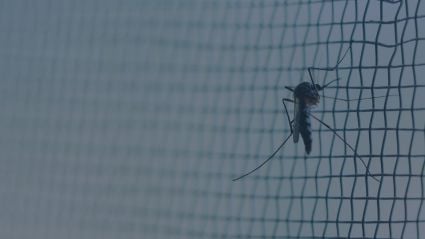
As a second wave inundates Malawi, public health officials and policymakers are asking, What lessons from Malawi’s mild 2020 experience should be applied in 2021?
Malawi is experiencing a deadly second wave of COVID-19 cases. New infections have spiked from one or two confirmed cases per day in early December to over 500 daily in mid-January. Two serving Cabinet ministers, Mohammed Sidik Mia, Minister of Transport and Public Works, and Lingson Belekanyam, Minister of Local Government and Rural Development, died within hours of one another on the morning of January 12, and other politicians, traditional leaders, and clergy have also passed away. In recent days, COVID-19’s victims have overwhelmed major hospitals—and cemeteries. In response, as cumulative confirmed cases reached 10,000, President Lazarus Chakwera declared a State of Disaster and assembled an emergency meeting of Malawi’s COVID-19 task force.
Based on official tallies, the new outbreak stands in contrast to Malawi’s ability to mostly contain COVID-19 in 2020. From the first known case on April 2, until the end of the year, Malawi saw less than 7,000 confirmed cases and 191 deaths. And unlike in many other countries in the region and around the world, Malawi appeared to able to keep COVID-19 in check even as the court system struck down an early attempt to impose a strict lockdown.
Chart: The COVID-19 Pandemic in Malawi (new confirmed cases per day, 7-day rolling average)
But medical research released in August of last year complicates this widely accepted understanding of Malawi’s COVID-19 experience. A landmark study from the Malawi-Liverpool-Wellcome Clinical Research Programme (MLW) estimates that up to 12 percent of Blantyre City, the country’s business and financial hub with a population of over 800,000, could have been infected during the first several months of the pandemic. In other words, the true number of COVID-19 infections in Blantyre City alone could have been close to 100,000.
As a second wave inundates the country, public health officials and policymakers are asking two pressing questions. Why weren’t widespread infections more fatal last year? And what lessons from Malawi’s 2020 experience should be applied in 2021?
“Early exposure but slow progression”
A team of MLW researchers led by Dr. Marah G. Chibwana found that 84 out 500 otherwise asymptomatic health workers in Blantyre City tested positive for COVID-19 antibodies. These 84 people worked in clinics geographically distributed throughout the city, and only half were involved in COVID-19 care. The prevalence of antibodies among this group, as well as their geographic dispersion, the researchers write in their report, “suggests local transmission was high and that SARS-CoV-2 may have been circulating for some time in Blantyre City.”
Based on these numbers, though, pandemic models would have predicted 8 times as many deaths as Malawi officially recorded through August. This discrepancy led the MLW researchers to conclude “there was early exposure but slow progression of the COVID-19 epidemic in urban Malawi.”
Why did COVID-19 spread slowly after the initial outbreak? According to local public health experts, this question has not been conclusively answered, but four factors stand out as contributing to the country’s overall resilience in the face of the virus.
First, there are the country’s demographics. About 79 percent of the country’s population of 18 million is less than 35 years old. According to public health specialist, Professor Adamson Muula of the University of Malawi, the country’s young population likely helped prevent a more dire public health disaster. “Young people may catch the coronavirus, but their risk of severe disease and death is not as high. This obviously helped.”
Second, due to the warm, humid climate, life in Malawi is lived outdoors or in well-ventilated buildings, leading to lower viral transmission. “We are an outdoors people,” says Professor Muula. “In Europe and America, people stay inside. Here we stay outside for most of the time. Other people also suggest that the nature of our buildings, where windows are always open, is important. You can’t say that with Europe and North America.”
Third, the high burden of other infectious diseases, including potential exposure to other coronaviruses, may have primed Malawians’ immune systems to fight back more effectively against COVID-19, making cases less severe and limiting the speed of transmission.
“Malawi has a robust health system that was able to respond, made many mistakes, but was willing to change and adapt and respond with the resources at its disposal. The Malawi health system also mobilized new resources that went a long way to address the different challenges that were encountered.”
Fourth, the public system has proven to be stronger than many predicted. Health facilities were adequate to isolate and treat known COVID-19 patients, and health authorities effectively communicated the importance of basic public health measures such as wearing a mask and maintaining social distance. Professor Muula says, “I can understand the desire for better health systems, but I have since stopped calling our health system weak. It is not in fact. The health system and the Ministry of Health could have done more and will always fall short of expectations, but sometimes this is because our expectations are very high.”
He adds, “Malawi has a robust health system that was able to respond, made many mistakes, but was willing to change and adapt and respond with the resources at its disposal. The Malawi health system also mobilized new resources that went a long way to address the different challenges that were encountered.”
Finally, he says, “Although Malawi has had difficulties enforcing public health measures, it was one of the first countries that adopted measures such as hand washing and this may have contributed to the country having fewer COVID-19 cases.”
Lessons from Malawi
While the country’s COVID-19 experience is still unfolding, Malawi’s experience so far offers at least three lessons.
1. Lockdowns are not always necessary or appropriate.
In April, the government attempted to impose a strict 21-day lockdown on the country, but the move was blocked by the courts. Advocates against the lockdown successfully argued that the country’s poverty levels meant that many Malawians relied on informal earnings that required them to leave their homes on a daily basis. As a result of the court rulings, the lockdown ended before it began, and economic activity continued as it had before, with the new additions of mask requirements and social distancing policies.
“Most likely a lockdown would not have achieved much,” says Professor Muula. “Yes, any death is one too many. But we can say clearly that the effect of coronavirus in Malawi has been minimal. Remember that even the Society of Medical Doctors (SMD) didn’t support the lockdown. And I believe the SMD was right.”
2. In order to make informed decisions about lockdowns and other containment measures, policymakers in countries like Malawi need better, locally developed and locally informed pandemic models.
As the MLW study found, standard modelling predicted eight times as many deaths as actually occurred. The researchers conclude, “This highlights the urgent need for development of locally parameterised mathematical models to more accurately predict the trajectory of the epidemic in sub-Saharan Africa for better evidence-based policy decisions and public health response planning.”
3. Even early success should not lead to complacency when it comes to COVID-19.
President Lazarus Chakwera attributes the current COVID-19 outbreak to the increased laxity of many Malawians, including his own, when it came to following basic preventative measures. He has called for Malawians to return to best practices.
Professor Muula agrees. “We are not yet out of the woods,” he says. “And so, it is important that all COVID-19 preventive measures that can be implemented, other than lockdowns, be implemented.”
MLW’s Dr. Chibwana offers a similar assessment. “It is important that Malawians remain alert and continue adhering to all COVID-19 preventative measures—wearing of face masks in public spaces, 1.5 meters physical distancing, and hand washing.”
Co-Chairperson of the Presidential Taskforce on COVID-19, Dr. John Phuka likewise says, “We don’t know what will happen in the second wave which has already shown its trends in the past two weeks, as cases of COVID-19 are now on the increase in the country.”
Dr. Phuka encourages his fellow citizens to strictly adhere to COVID-19 prevention measures such as hand washing, maintaining social distance, and masking up at all times when they are in public places.









